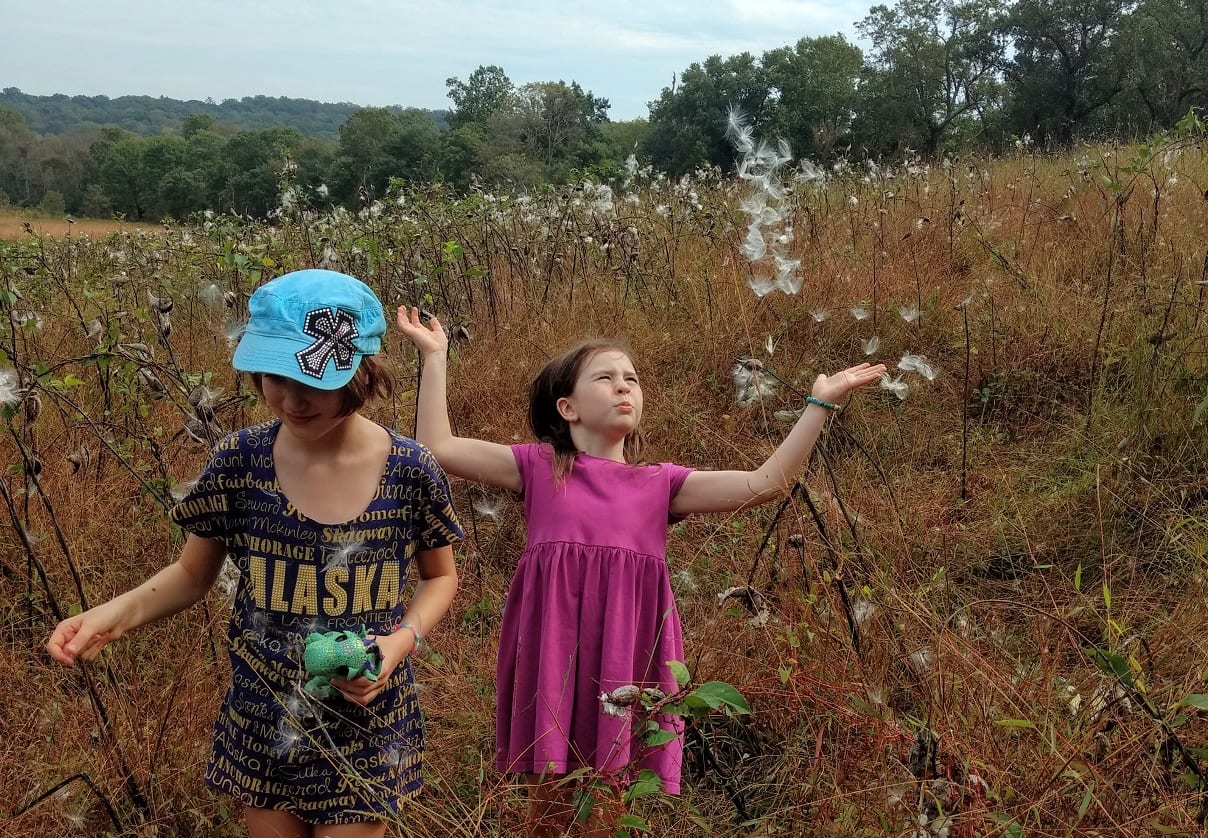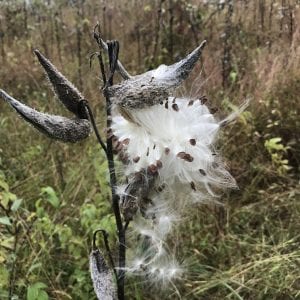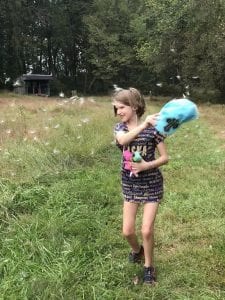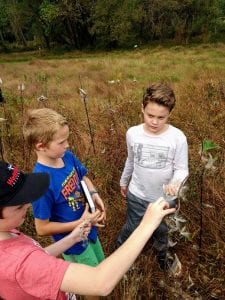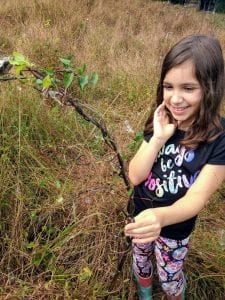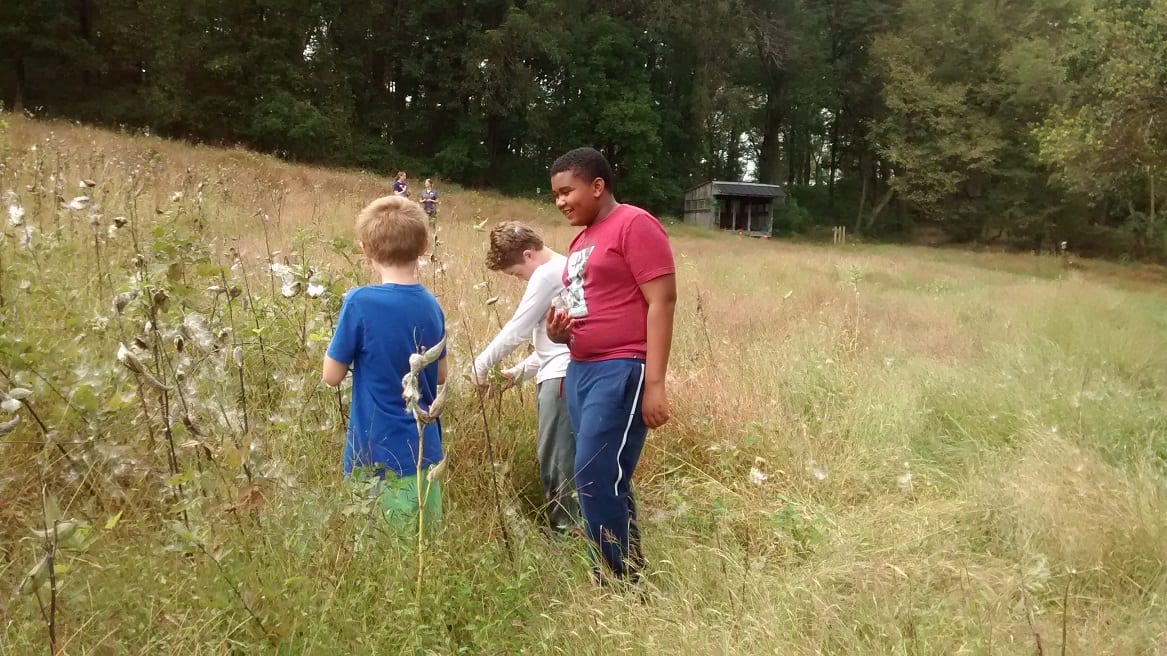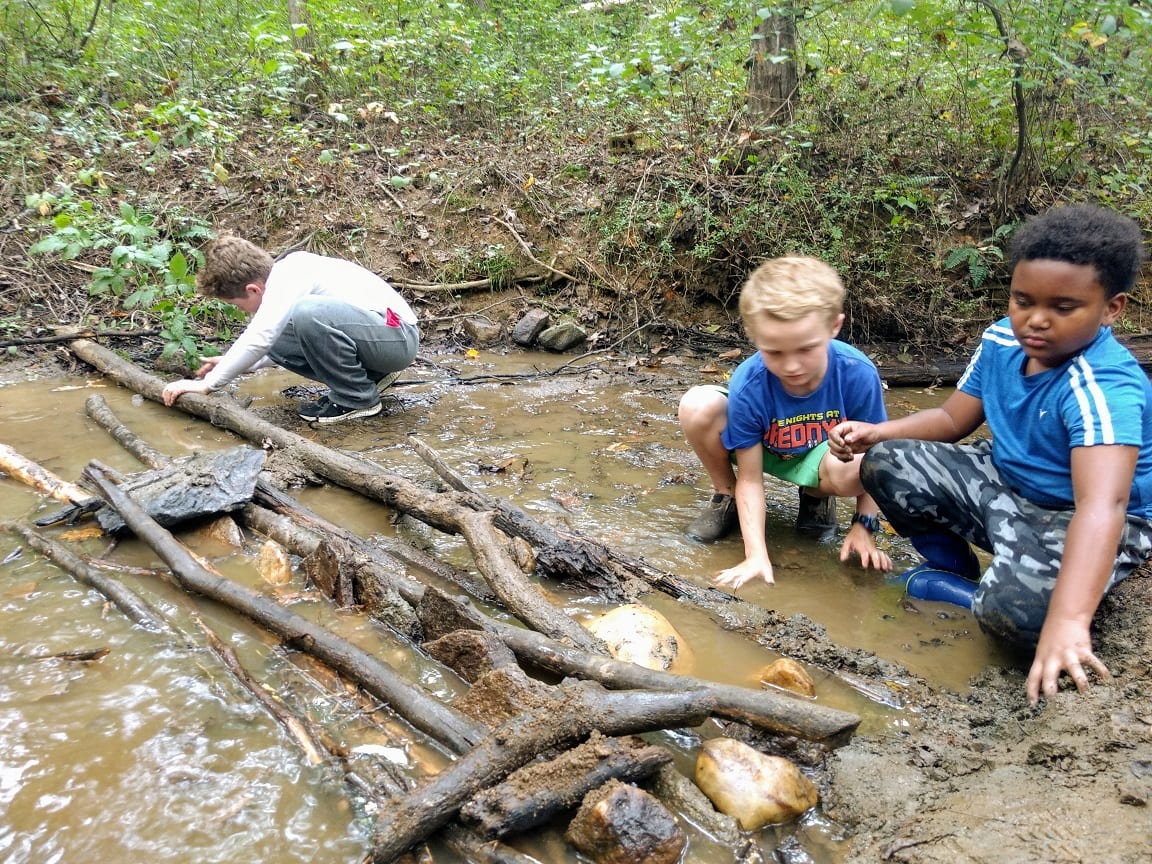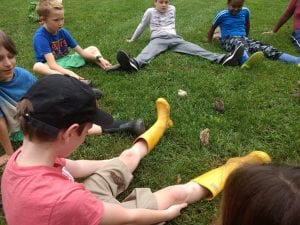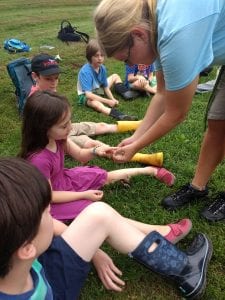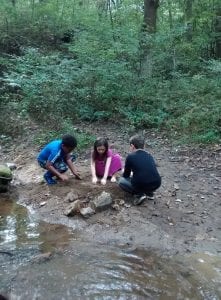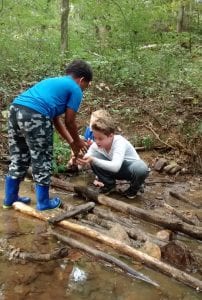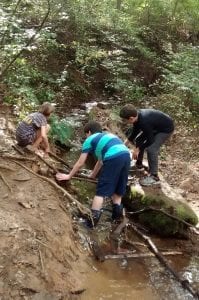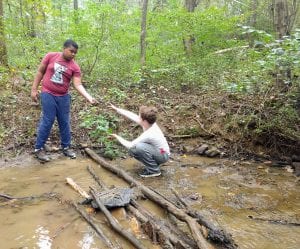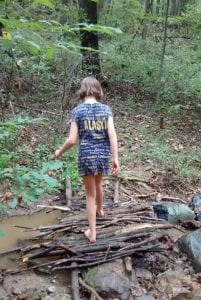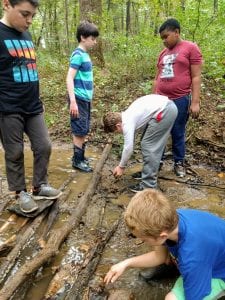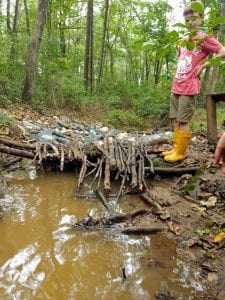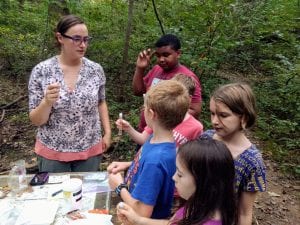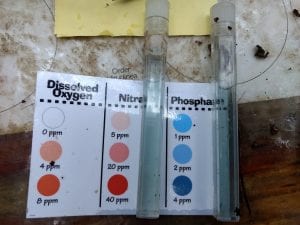10/2/2018
Today we explored more of the science aspect of our class, learning more about the life cycle of the milkweed plant, experimenting with water flow by building a dam, and doing water tests to determine the health of the stream we were playing in. Last week we learned about the land artist Ashley Kidner (whom we plan to revisit next week) and how his work has an environmental message and tells the story about the geology of an area, the plight of a species or the importance of a plant and its role in an ecosystem. In order to build on our connections to the land in order to recreate our own land art, we explored a new habitat here at Irvine, the stream. Before spending time at the stream doing our engineering projects and experiments, we investigated the meadow and the milkweed pods that are now bursting with fluff and seeds.
Rewinding back to the very beginning of class we got a special visit from some of our co-worker’s baby quails. One of the species she raises is actually native to Maryland, the Bobwhite. The Bobwhite quail have seen their numbers decline all over the country, mostly due to habitat loss. They’re also very vulnerable to predators since they aren’t able to fly. They can flutter up into the air and fly very short distances but they must land again right away, making it hard for them to escape. Their habitat requirements can be found here at Irvine, large open grassy areas where they can forage for food with readily available cover from shrubs and brambles along tree lines. The Bobwhite remains elusive here at Irvine. (Pictures of us visiting the quail can be found at the end of the post).
If you would like to learn more about Bobwhite please check out the links below:
https://www.allaboutbirds.org/guide/Northern_Bobwhite/id
http://dnr.maryland.gov/wildlife/Pages/plants_wildlife/BobWhiteQuail.aspx
After a fun encounter with the Bobwhite quail (Jenna also had a second species of quail that isn’t native to Maryland), sharing our adventures from over the weekend, snack and a review of our intentions at the Gazebo, we visited the meadow and the bursting milkweed pods.
During one of our previous classes we learned the importance of milkweed for the survival of monarch butterflies here in Maryland and across the United States where they can be found. Milkweed (there are a variety of milkweed species) serve as a host plant for the struggling monarch. (You can learn more about monarchs in the Week 2 blog post). With the arrival of fall comes the bursting of the seed pods. The pods dry on the milkweed plant and the seeds inside literally burst out after the pod cracks open. There are roughly 250 seeds per pod and they are dispersed by the wind (a lot like a dandelion). The stalk of the milkweed also dries and falls over but the large taproot remains alive, ready to grow a new plant next year. The seeds require cold weather followed by warming weather and rain to germinate the following year. The following is a link to some information about milkweed and even how you can help by growing milkweed in your garden at home!
https://www.americanmeadows.com/perennials/milkweed/all-about-milkweed
Some of our discoveries and observations while in the meadow were a beautiful spider in a web covered in milkweed fluff, grasshoppers on milkweed pods, and a jumping spider eating a small fly. Fiona also described the milkweed fluff and its seed as looking like a lady with a dress. Arianna performed a magic trick by stuffing her hat with milkweed fluff and revealing it in amazing fashion! Sarah Jane also noticed that some of the vines twirling around the milkweed stalks looked like the Swalevine art from Ashley Kidner last week, what a great connection! Some of us also explored an old fort build in the forest that we plan to check out again later on in fall.
After a lot of amazing meadow discoveries, we headed to the stream to explore how nature and humans can change the land in positive and even negative ways. We started by exploring the stream, noticing how the water moves over the land, the plants growing around the edges of the stream, the frogs hopping into the deeper water to hide under a decaying fallen log and a toad we found on the rocks. We also noticed holes in the stream along the bank, likely made from crayfish. Once we had explored and done some initial observations it was time to construct. We decided a dam would be a great structure to build together. Working on a group project is a fantastic way to create new social bonds and communication skills. It encourages people to try to work together in a positive way on a team and it also gets the kids asking questions, making suggestions and even falling into roles (like a leader of the project for example). While creating our dam we discussed how we were changing the stream dynamics, for example, by building the dam we were altering the flow of water. We noticed the water pooling behind the dam, becoming shallower behind it and also becoming more muddy. We also experimented with the best materials to use to build the dam finding out that flat rocks, large sticks, clay like sand and leaves worked the best. While we were building the dam another group of us was working on a foot bridge to go over the stream (pictured at the end).
After building our engineered designs (removing the dam as to not leave our impacts on the stream), we did some quick water testing to see how clean the water is that we were working in. This water, even though it is miles and miles from the Chesapeake Bay does eventually make its way there in some fashion so it’s important to know how clean the headwaters really are. The tests we did were water temperature and phosphates. We hope to follow up with dissolved oxygen and nitrates. (Check out our results below in the last picture). The water after 5 minutes turned a shade of blue, which we then compared to our sheet. As you can see below, the color of blue is somewhere around 1-2 ppm (parts per million), which is a decent number. In most cases you want some phosphates since they naturally occur at these levels in freshwater but you don’t want them to high (4 ppm would likely lead to concern). High levels of phosphates act as fertilizers but in water which can lead to plants in water growing too quickly. That may not sound like a bad thing, however, the plants that take advantage of these phosphate fertilizers are algae, tiny floating plants, that when they grow to large proportions block sunlight from getting below the water’s surface and actually killing plants below, degrading the habitat for wildlife. We can keep phosphates out of our water ways by not fertilizing more than necessary, using more organic fertilizers or compost, not fertilizing before it rains and using biodegradable soaps in our dishwashers, laundry and while washing our cars. Next week we plan to continue our discussion of our engineering projects and continue our water monitoring project.
